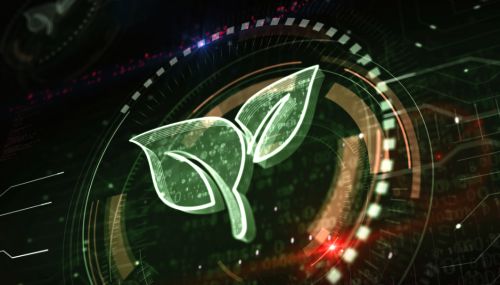All
Supporting Your Lower Carbon Journey at All Stages
by Jason Lawrence, Chevron Renewable Energy Group

Lowering life cycle carbon emissions has become more than just a trend. We understand that companies are at different stages in their lower carbon journeys. To help your organization find ways to make an impact, Chevron has created a guide that outlines tips to help you work toward your lower carbon targets.
Whether your business is at the beginning stage of its journey, looking for additional ideas to accelerate reduced carbon intensity, or already having a developed, measurable approach, use this resource to help support your lower carbon plan and make an impact today.
Incorporating Lower Carbon Fuel Solutions Into Your Operations
With the increased focus on the environment and sustainable business practices, more companies are looking for lower carbon solutions — both to help reach lifecycle carbon emissions targets and to potentially gain a marketing advantage.
Your company may already be making strides in this direction. Perhaps your organization has hired a sustainability director or are evaluating your supply chain for opportunities to reduce your carbon intensity. If your company is looking at incorporating lower carbon fuel solutions, then based on certain industry trends, it would appear that you’re on the right path.
What Are My Lower Carbon Fuel Solution Options?
The energy system is enormous, the pace of change differs around the world, and many energy solutions will be required to meet future demand.
When exploring your lower carbon fuel options, some of the key elements to consider are:
- Scale: How well is your organization’s infrastructure able to handle the transition? Factors such as tank storage, blender systems, location and logistics should all be considered.
- Speed: Depending on where your operation is located, the speed of transition may vary. For example, in areas where federal and state incentives exist, there may be a more established infrastructure in place. This can help make the switch to lower carbon fuel solutions move more quickly.
- Solutions: Many solutions are required to help enable companies to reach net zero by 2050. With an increasing number of options available, the lower carbon fuels industry now provides greater flexibility to find the right solution to fit a variety of situations.
Let’s look at the liquid fuel solutions from Chevron.
Biodiesel
Biodiesel is made from a variety of resources, many of which are plant-based, with their energy coming from the sun instead of fossil fuels. Other available feedstocks include diverted waste
or byproducts from different industries, providing a new use rather than going to a landfill. These lower carbon feedstocks help biodiesel emit less greenhouse gases than traditional fuels.
Biodiesel is a drop-in fuel that can be used in most existing diesel vehicles and fueling infrastructure, giving diesel fleets
a solution for lowering lifecycle carbon emissions quickly with their existing equipment. Biodiesel blends of B20 and above are widely available for your use today.
Compared with petroleum diesel, biodiesel fuel can also help performance through higher cetane, added lubricity and reduced particulate emissions that can put less stress on diesel particulate filters.
Renewable Diesel
Renewable diesel is made from the same feedstocks as biodiesel but uses a different production process. The result is a renewable fuel that is more like petroleum diesel and meets the same ASTM D975 specification.
Renewable diesel is a newer alternative fuel on the market but has quickly become popular as it can effectively reduce carbon emissions, deliver strong performance and has up to 85 percent less sulfur than ultra-low sulfur diesel (ULSD). As lower carbon air regulations and targets become more common, this fuel will likely continue to grow in popularity.
What Can Be Done Today to Start My Lower Carbon Journey?
Start by understanding your baseline emissions and establish your own ESG reporting. There are a number of resources available to help organizations set GHG targets, including best practices and a “Corporate GHG Inventorying and Target Setting Self-Assessment” from the United States EPA.
Request meetings with suppliers to see where improvements and other changes can be made. Talk with your peers and industry leaders and see what your competitors are doing. Take note of how they are reporting progress and which efforts you can replicate. While this information may not be readily packaged in one place, you can glean insights from press releases, public ESG reports, following trade media outlets and other sources.
Regardless of where you are in your lower carbon journey, Chevron Renewable Energy Group can help. From tracking and quantifying your progress with our monthly GHG emissions reporting to tailoring solutions to providing technical and educational support, we can help drive value for your business.
Jason Lawrence is Senior Business Development Executive at Chevron Renewable Energy Group. He can be reached at (717) 989-1313 or jason.lawrence@chevron.com.
Related Posts
 Care and Treatment of Biodiesel Blends
Care and Treatment of Biodiesel Blends
Posted on December 18, 2025
 EIA Winter Fuels Outlook
EIA Winter Fuels Outlook
Posted on December 18, 2025
 How to Set Your Business Apart with Renewable Propane
How to Set Your Business Apart with Renewable Propane
Posted on October 16, 2025
 EIA Report: Biodiesel and Renewable Diesel Imports Fall Sharply
EIA Report: Biodiesel and Renewable Diesel Imports Fall Sharply
Posted on October 16, 2025
Enter your email to receive important news and article updates.
